If you’re a water sports enthusiast like me, you may be debating between wakeboarding and wakesurfing for your next adventure. Both are such a blast, but they definitely have their differences.
In this blog post, we’ll do a deep dive into wakesurfing vs wakeboarding and compare everything from the gear to the riding techniques. I’ll share my own experiences with both wake surfing and wakeboarding too.
Hopefully this helps you decide which of these awesome water sports you should try next!
The Basics – What’s the Difference?
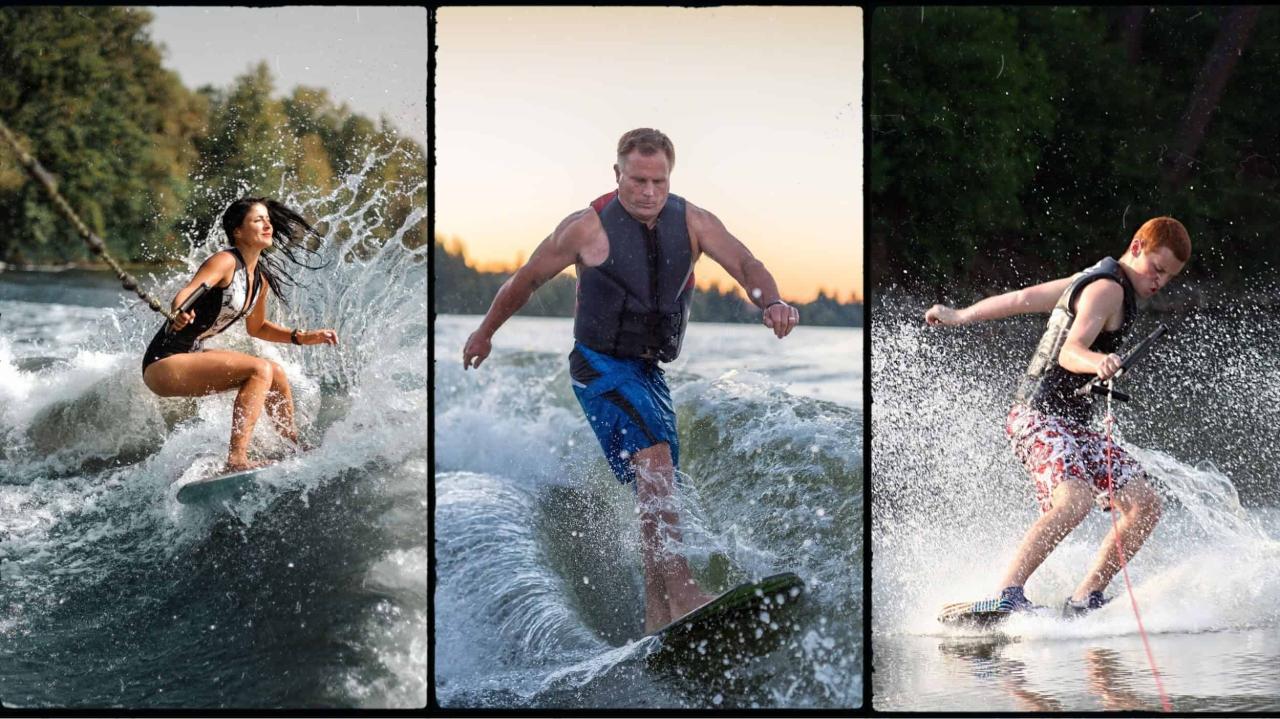
First, let’s cover the absolute basics. What exactly distinguishes wakesurfing from wakeboarding?
The main difference comes down to the boat speed and tow rope.
With wakeboarding, you ride at faster boat speeds of 18-24 mph and use a tow rope attached to the boat. But with wakesurfing, you ditch the rope and ride behind the boat at slower speeds of 10-13 mph.
So wakeboarding is like traditional water skiing with that tow rope pulling you along. Wakesurfing lets you surf right behind the boat wake without being directly tethered.
Both sports use a similar short board to ride on. But the shape and design differs slightly for each sport.
Now let’s get into more details on each one!
All About Wakeboarding
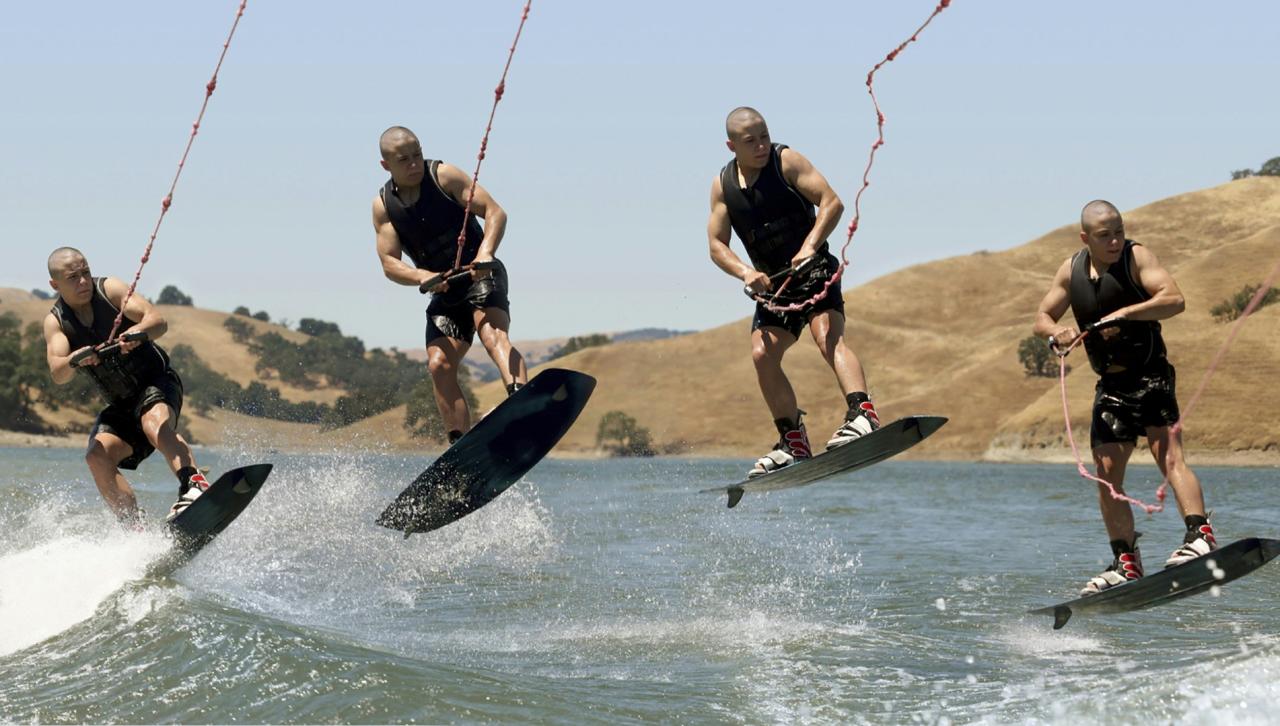
Let’s start with wakeboarding since it came first.
A Brief History
Wakeboarding emerged in the 1980s as a combination of water skiing, surfing, and snowboarding. The first wakeboards were made by bolting bindings onto water skis.
Over the years, wakeboard technology improved with lighter materials and more advanced designs. The sport has continued to grow in popularity ever since.
Getting Started with Wakeboarding
Getting up on a wakeboard for the first time can be tricky. The key is starting off at slower speeds.
As a beginner, you’ll hold the handle attached to a rope that pulls you along. Start at around 12 mph before working up to faster speeds.
Learning the proper technique is so important. Stay low and keep your arms extended and knees bent to maintain balance. The boat’s wake will give you something to jump off.
It takes time to get comfortable letting the rope pull you as you ride across the water. But once it clicks, wakeboarding is the best rush!
Wakeboarding Techniques
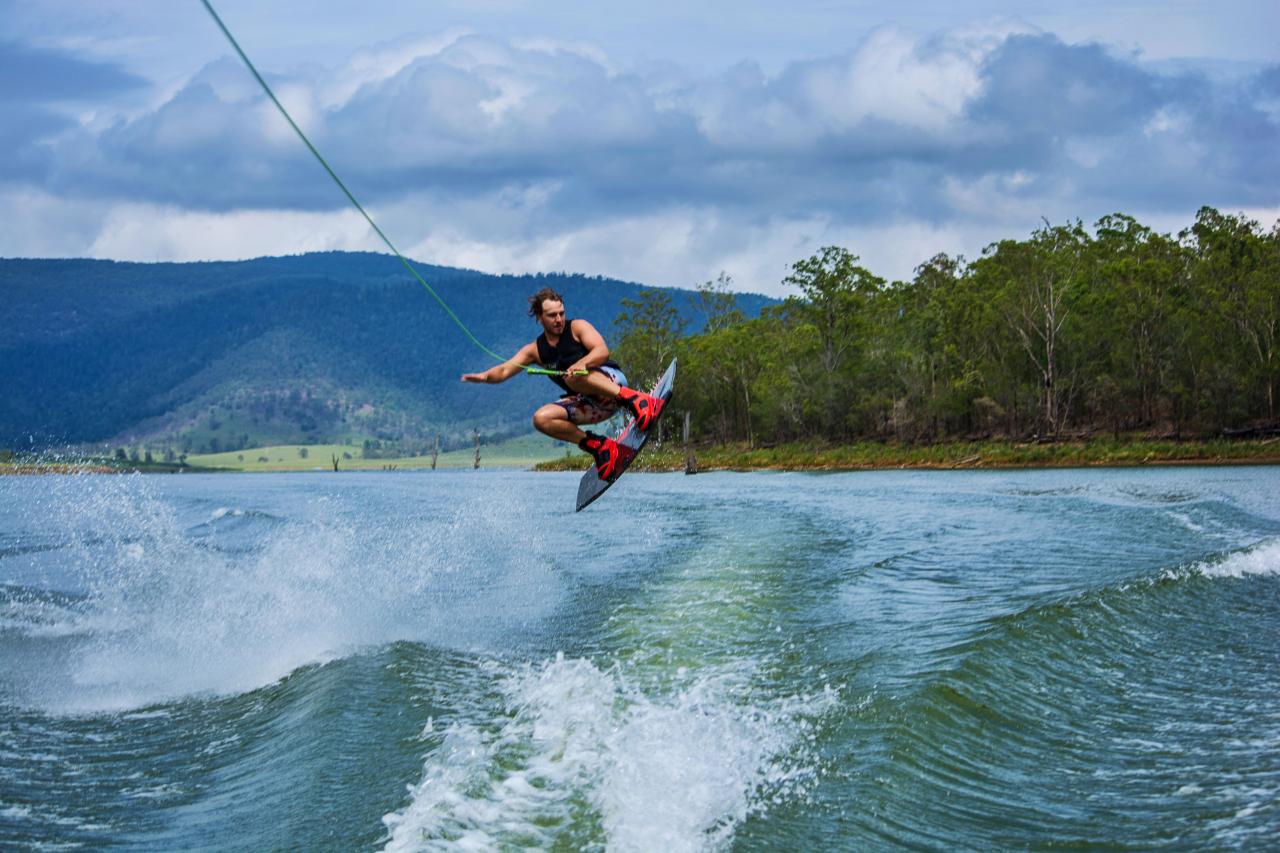
Once you’ve gotten your wakeboarding legs, you can start honing more advanced skills like:
- Edge control – angling the board to cut back and forth
- Jumping – using the wake as a ramp to catch air
- Rails – sliding across a rail bar suspended above the water
- Butter – flexing the board to skip along the surface
With practice, you can learn to do flips, spins, and all kinds of tricks!
Wakeboarding Gear
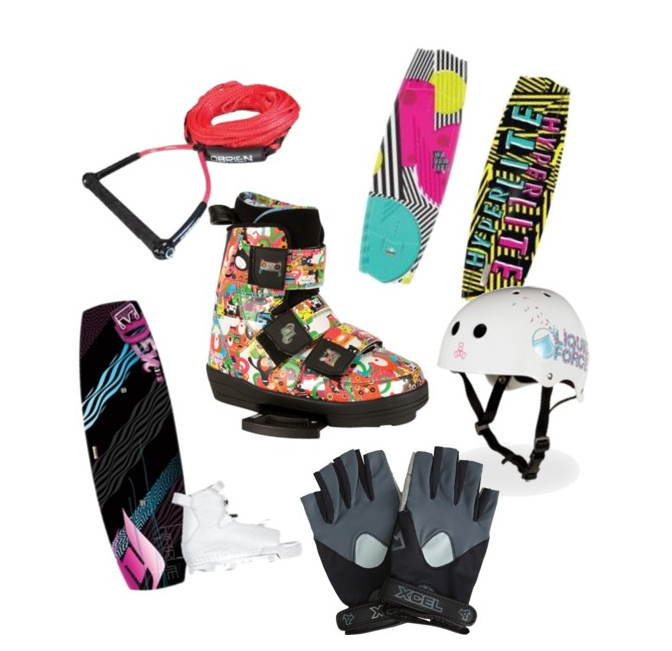
To go wakeboarding, you’ll need:
- Wakeboard – a short buoyant board with boot bindings
- Life jacket – for safety on the water
- Wetsuit – to keep warm while riding for hours
- Helmet – protects your head during falls
- Tow rope – attaches you to the boat
Wakeboards are made from foam, honeycomb, or wood. The shape and rocker vary based on skill level.
Bindings hold your feet on the board. They come in open or closed toe styles. Beginners usually prefer easy rear-entry bindings.
Wakeboarding vs Surfing
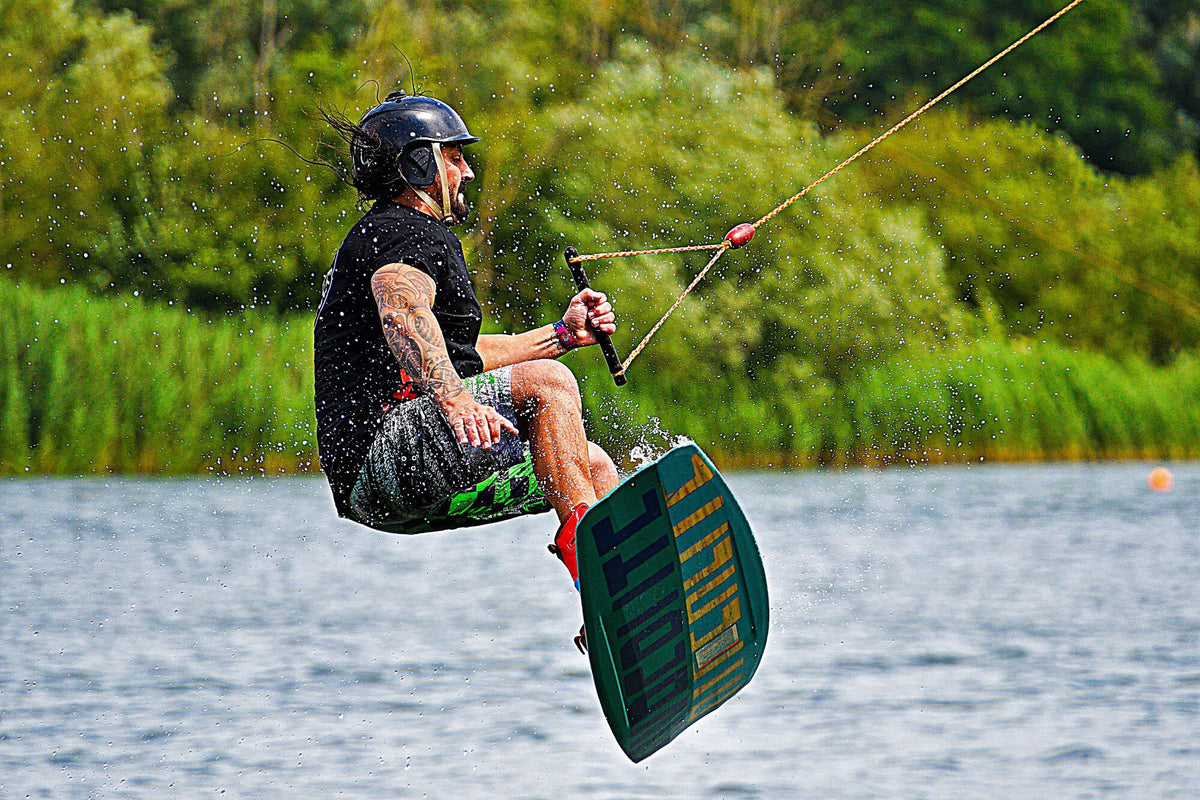
While wakeboarding has some similarities to ocean surfing, the experience is quite different.
With surfing, you ride real ocean waves and are at the mercy of the natural conditions. Wakeboarding generates a consistent wake wave with the boat.
Still, wakeboarding does allow you to crossover and use certain surfing techniques like carving. The sports share a similar sensation of riding across water.
Introducing Wakesurfing
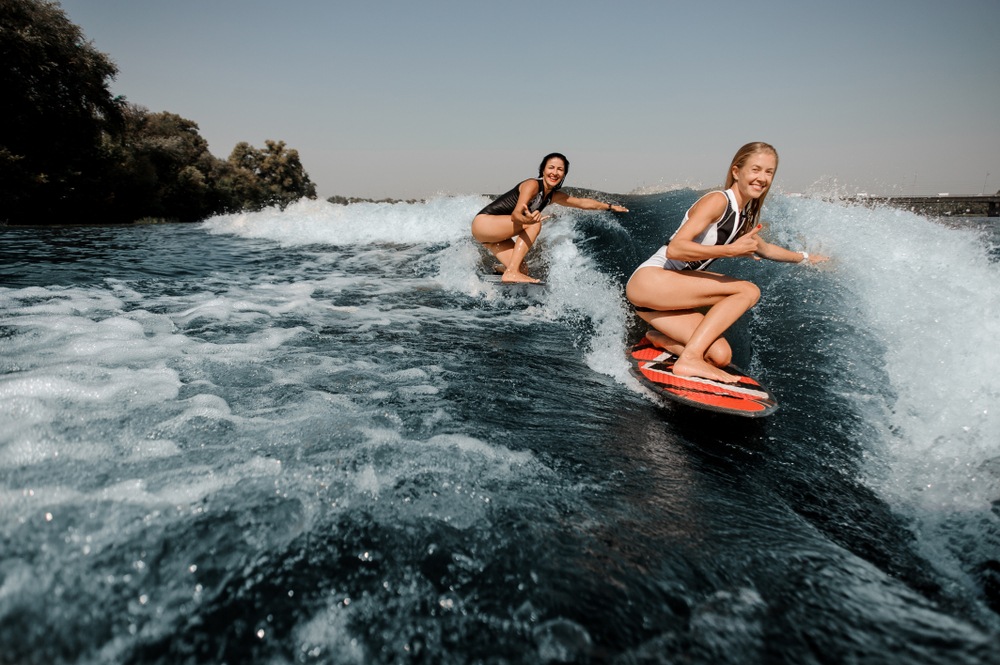
Now let’s switch gears and talk about this hot new sport – wakesurfing!
How Wakesurfing Started
Wakesurfing emerged in the early 2000s as a spinoff of wakeboarding. People realized they could ditch the rope and surf just behind the boat’s wake.
The sport quickly took off in popularity thanks to its accessibility. Wakesurfing is easier to learn than wakeboarding for many beginners.
Plus, the slower boat speeds are gentler on your body. It opened up wake sports to a whole new crowd!
Learning the Ropes of Wakesurfing
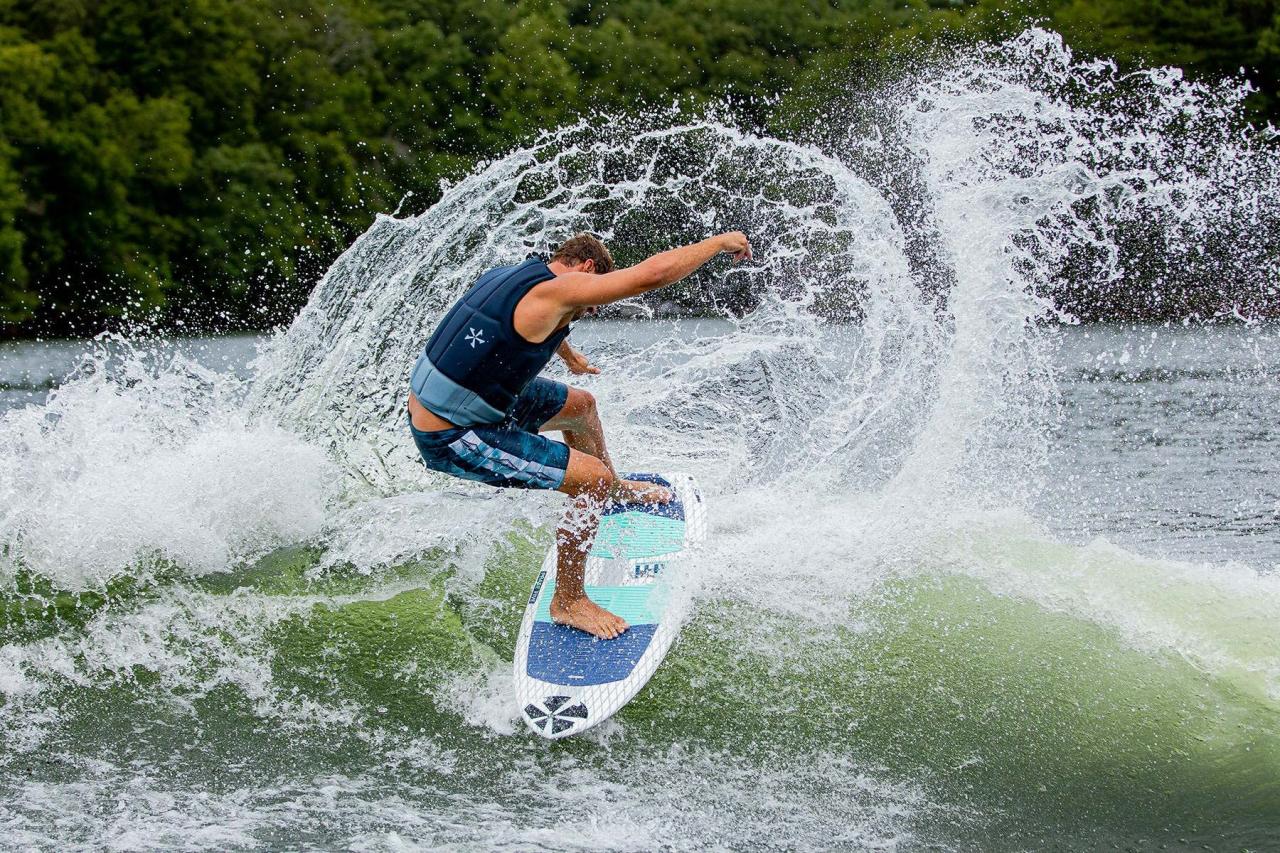
Getting started with wakesurfing is less intimidating than wakeboarding. You don’t have to worry about the tug of the tow rope.
To begin, you simply drift behind the boat on a small surfboard-style deck called a wakesurf board. Then when the boat hits 10 mph, its wake builds up for you to ride.
The key is finding your balance as you surf along that rolling wake. Bend your knees and use your core strength to maneuver across the wake face.
Many beginners can stand up their very first time! But mastering control takes more practice.
Spotlight on Wakesurf Boards
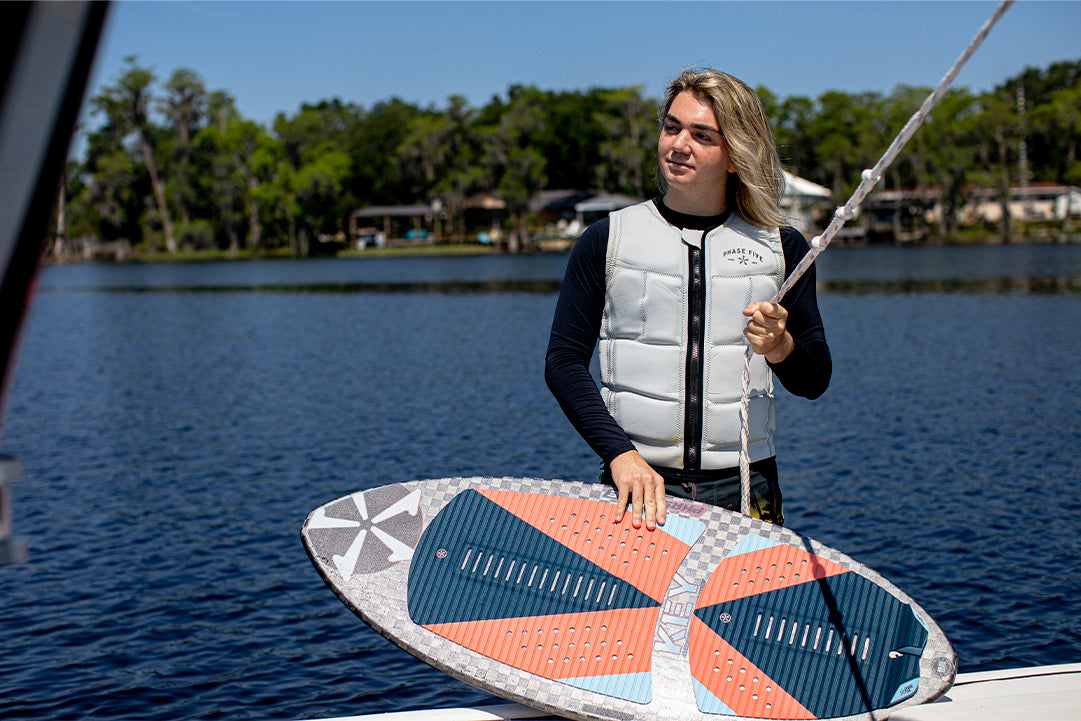
Let’s take a closer look at those wakesurf boards that make the sport possible.
Wakesurf boards need to be short, wide, and buoyant to ride behind the boat wake. Most are around 4 feet long by 20-22 inches wide.
Here are the main types of wakesurf boards:
Surf Style
Surf style boards have a pointed nose and rounded square tail. This versatile shape is ideal for beginners learning proper technique.
The quad fin setup helps generate speed. Surf style boards work for all skill levels to perform tricks.
Skim Style
Skim style wakesurf boards feature a wide fish-like shape. The wide pointy nose helps the board glide effortlessly across the water.
Skim boards are great for intermediate to advanced riders who want maximum speed. The flat bottom makes landings smoother.
Hybrid Style
Hybrid wakesurf boards blend elements of surf and skim shapes. They usually have a rounded nose and wide tail.
The hybrid design provides a mix of speed, stability, and maneuverability. This style appeals to a wide range of riders.
When choosing a wakesurf board, consider your skill level and preferences. A specialty shop can help find the ideal board.
Wakesurfing Techniques
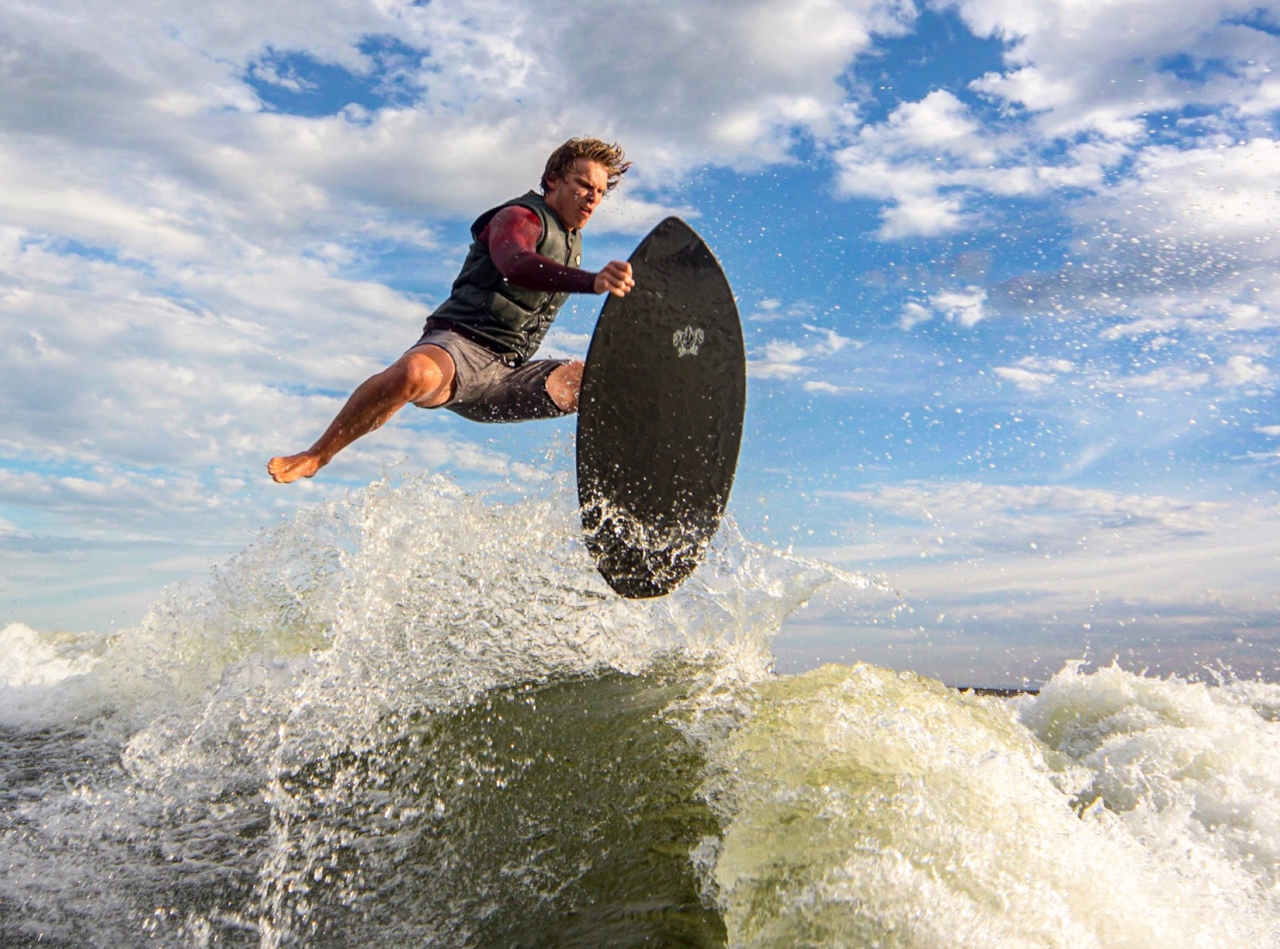
Once you’ve gotten comfortable riding the wake, you can try more advanced wakesurfing skills like:
- Pumping – shifting your weight to build speed
- Cutbacks – turning sharply back toward the wake
- Spins – rotating the board 180 or 360 degrees
- Switch stance – riding with your opposite foot forward
Wakesurfing may look mellow, but you can still pull off some pretty sick moves!
Wakesurfing Gear
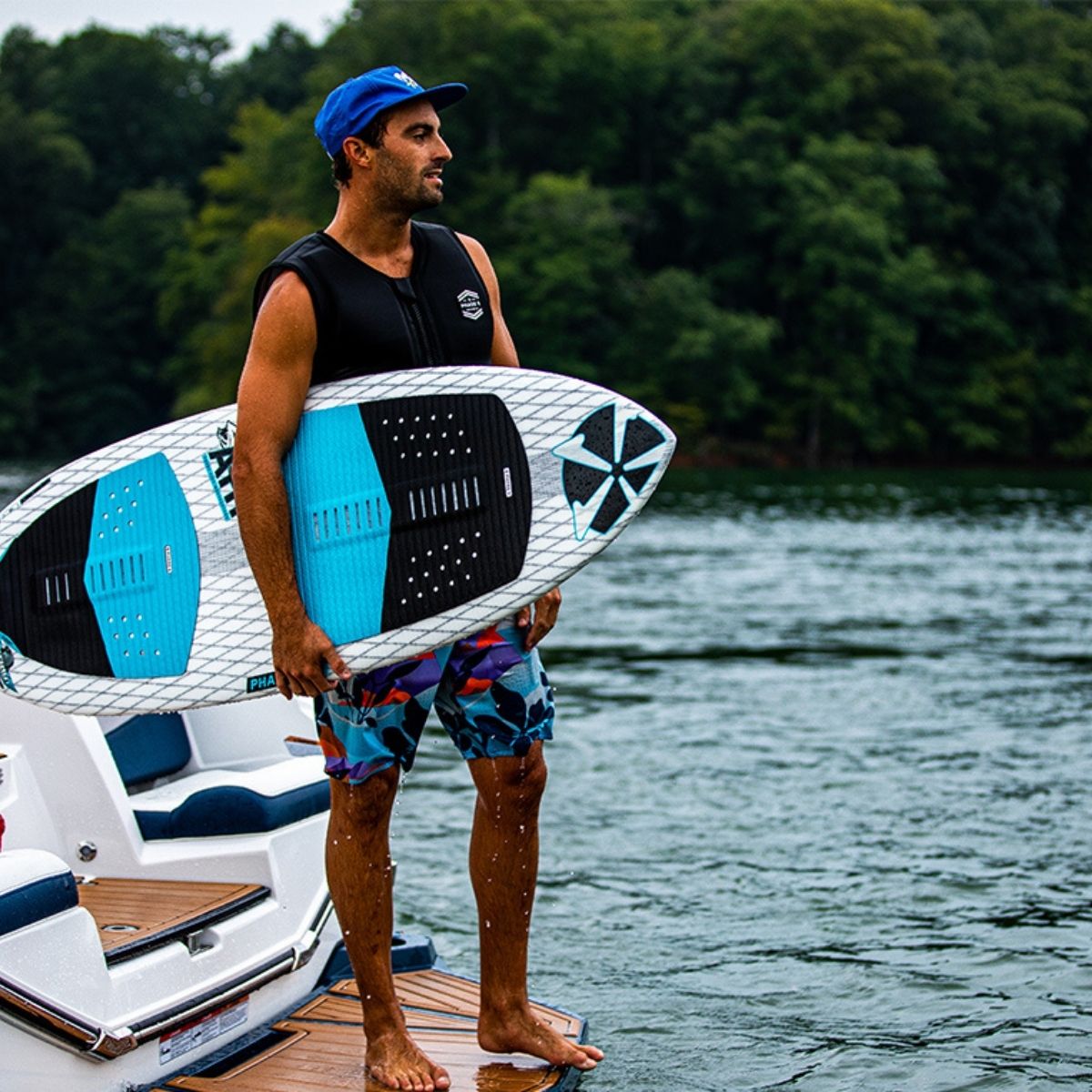
Compared to wakeboarding, the wakesurfing gear is pretty minimal:
- Wakesurf board – shorter and wider than a wakeboard
- Life jacket – a must for safety
- Wetsuit – optional for warmth, but not usually needed
- Helmet – recommended to protect your head
The wakesurf board is the most important piece. Beginners should start with a bigger board around 52 inches long. More advanced riders can use a smaller board.
The quad or thruster fin setup helps generate speed and stability. The textured deck provides grip for your feet.
Wakesurfing vs Surfing
You might be wondering how wakesurfing compares to true ocean surfing. Let’s contrast the two:
With wakesurfing, you have the boat generating a consistent wake to ride anytime. Surfing depends on real ocean swells and waves.
Surfing involves paddling out, while wakesurfing starts with drifting behind the boat. Surfing has a steeper learning curve too.
But both sports provide that incredible feeling of riding across the water!
Wakesurfing vs Wakeboarding – Which is Better For You?
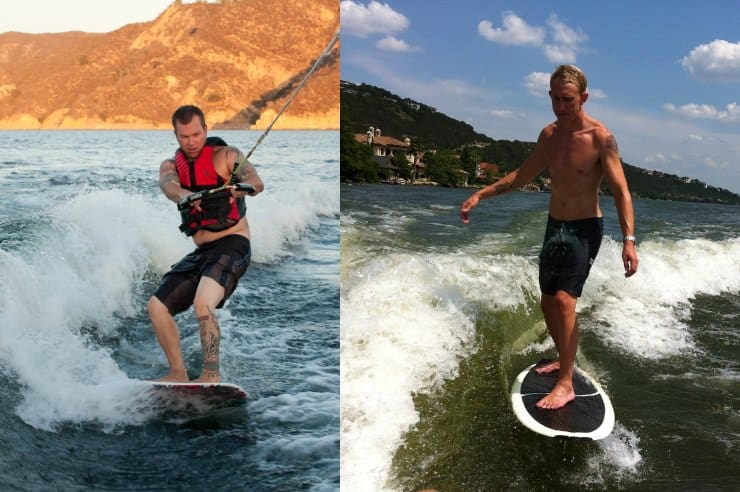
So now that you know the basics of each sport, should you try wakeboarding or wakesurfing? Let’s compare some key factors to help decide:
- Learning Curve: The learning curve is steeper for wakeboarding. You have to get used to the pull of the tow rope. Wakesurfing is easier for beginners to pick up quickly.
- Physical Intensity: Wakeboarding is a more intense, athletic workout. Wakesurfing is mellower on your body. The slower boat speed reduces strain.
- Speed: Wakeboarding reaches faster speeds of 18-24 mph. Wakesurfing tops out around 13 mph since you ride without the tow rope.
- Tricks: Both sports allow aerial tricks, spins, flips, and rail slides. Wakeboarding’s faster speed lends itself to bigger air and more variations.
- Cost: The gear costs are similar, but wakeboarding requires more fuel since the boat runs faster. Wakesurfing saves on gas with the slower speeds.
- Age/Ability: Wakeboarding has a higher minimum age, usually 8 years old. Wakesurfing can work for younger kids since it’s gentler. Either sport can suit a wide range of abilities.
- Atmosphere: Wakeboarding has a high-energy vibe. Wakesurfing feels more low-key and relaxed. Different personalities may prefer one over the other.
- Boat Requirements: You need a boat with some power to generate a wake for either sport. But wakeboarding requires more horsepower and weight capacity to reach those higher speeds.
My Personal Experiences
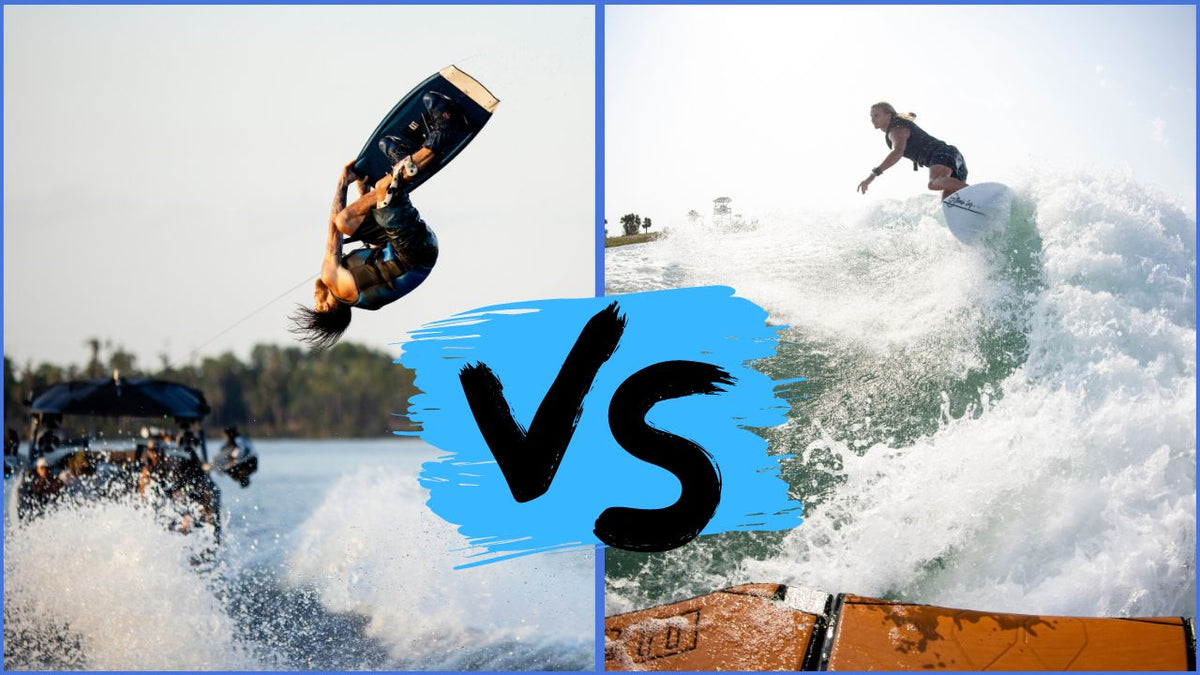
I’ve tried both wakeboarding and wakesurfing many times over the years. Here’s my take on the pros and cons of each:
Wakeboarding
Pros:
- Huge adrenaline rush from the speed
- More tricks possible with bigger air
- Love the athletic challenge
Cons:
- The falls hurt more at high speeds
- Requires more upper body strength
- Tougher learning curve
Wakesurfing
Pros:
- More mellow and forgiving on your body
- Easier to learn quickly
- More relaxing overall vibe
Cons:
- Misses that intense thrill of wakeboarding
- Tricks are somewhat limited
- Gets boring more quickly for me
So for my personality, I tend to favor wakeboarding. I love going all out for the adrenaline rush and challenge. But I know many others who prefer the gentler pace of wakesurfing.
Which Water Sport is Right For You?
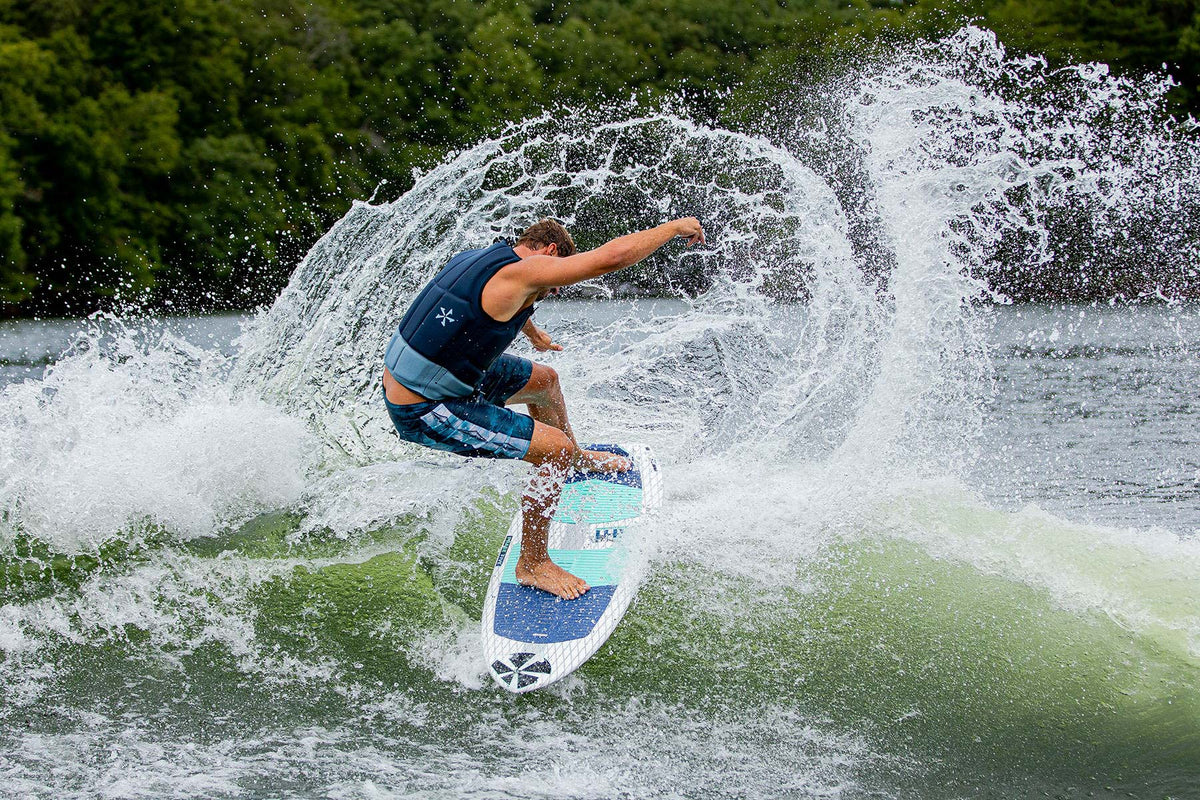
As you can see, both Wakesurfing vs Wakeboarding are amazing sports! But which one fits your goals and personality best?
Think about your skill level, athleticism, age, and tolerance for high speeds. Do you want to take on an intense challenge or cruise at a mellower pace?
If you’re ultra competitive and love to go big, wakeboarding may be your perfect match. Or if you want a smoother learning progression, wakesurfing is the way to go.
Wakeboard Traveller‘s advice is to try both! See which clicks better and brings the biggest ear-to-ear grin. You really can’t go wrong.
No matter which you choose, you’ll be making lasting memories and enjoying an incredible ride across the water. Get out there and make some waves!
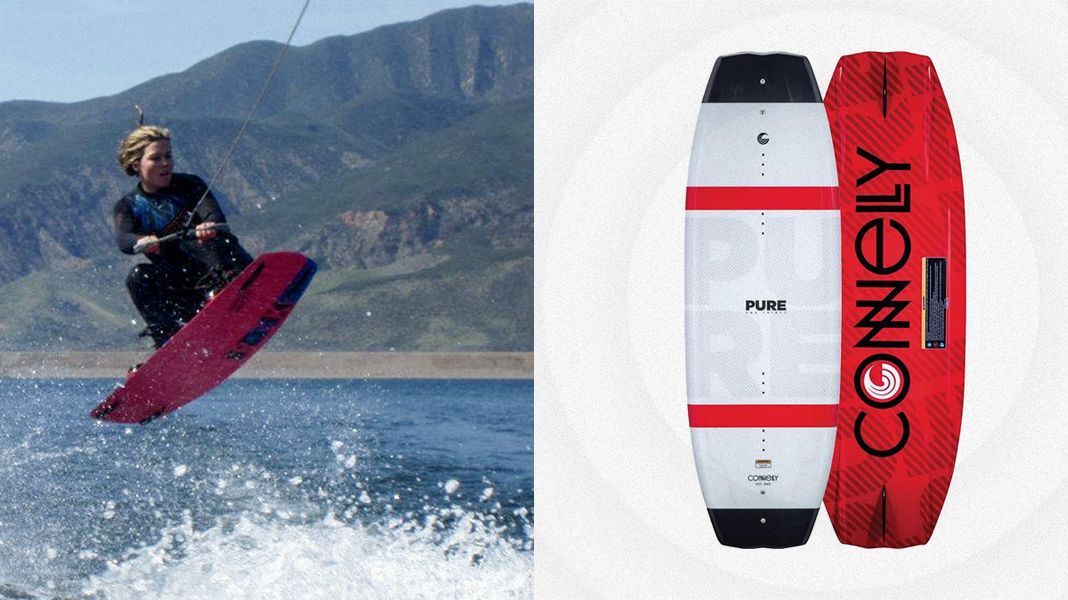
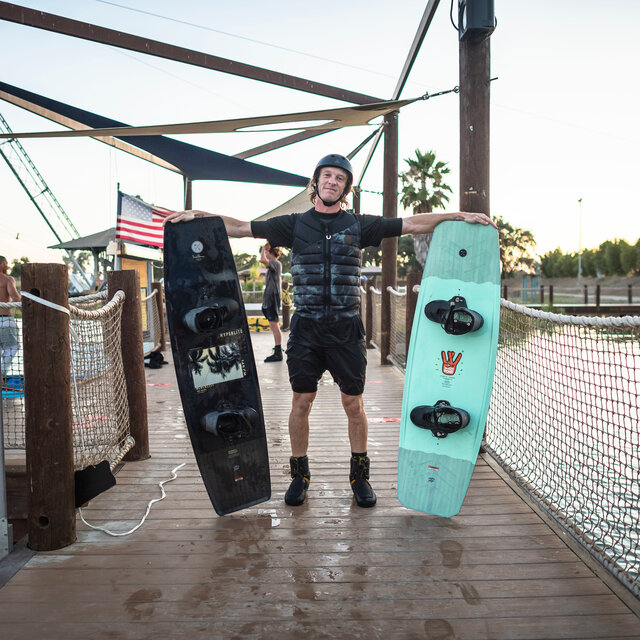
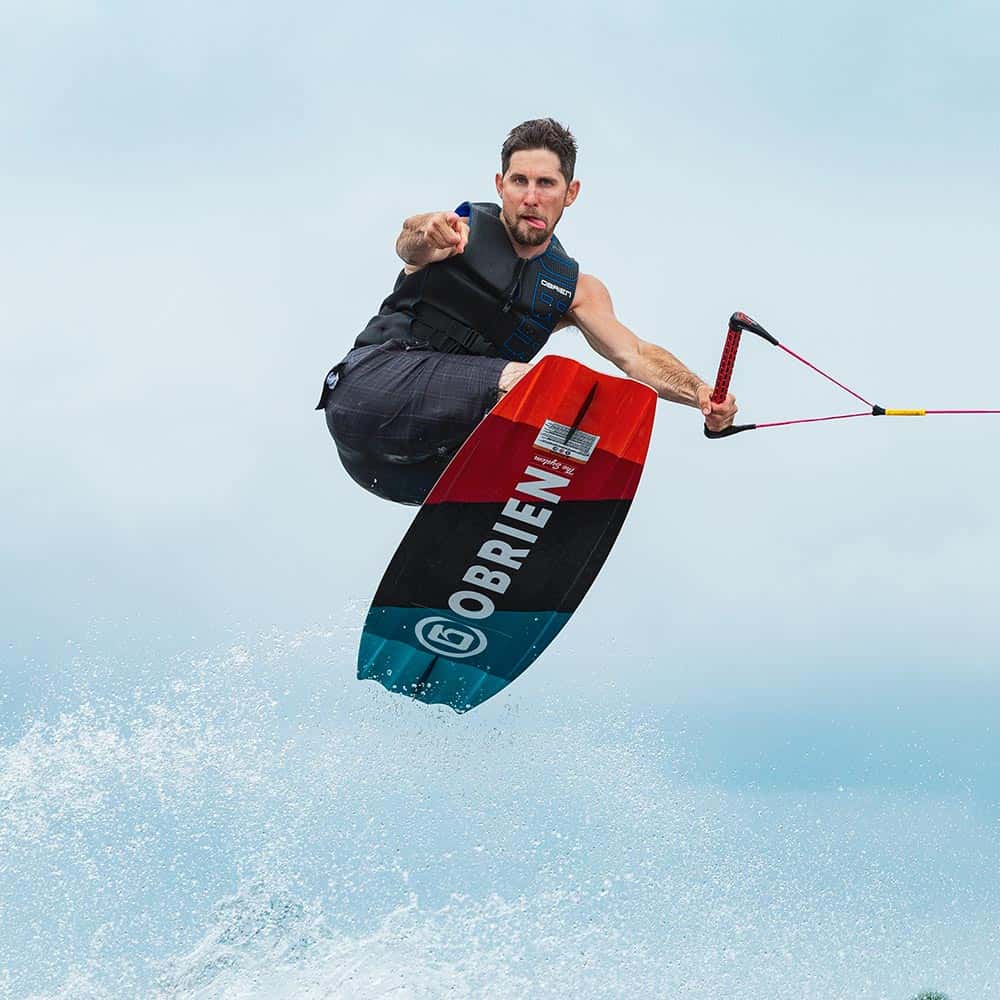
Leave a Reply